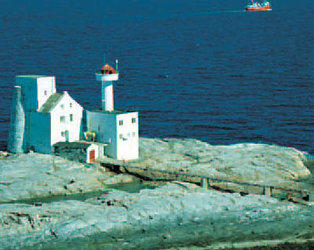EGNOS TRAN – Maritime
Due to the low elevation of the EGNOS satellites, their signal is difficult or sometimes impossible to receive in certain regions. Many present and also future applications require a high accuracy and also a high reliability of the position determination, which can easily be performed by European Geostationary Navigation Overlay Service (EGNOS). If the EGNOS signal cannot be received, the requirements of those applications can no longer be satisfied.
To lessen the problem the EGNOS Terrestrial Regional Augmentation Networks (EGNOS TRAN) - Maritime project team evaluated various technical methods to broadcast the EGNOS signal via terrestrial networks, like GSM/GPRS, Loran-C or Ground Regional Augmentation System (GRAS).
The EGNOS TRAN maritime project works by integrating EGNOS with a VHF link called Automatic Identification System (AIS) used by the maritime users for communications between vessels and communication with the shore. This system, set-up in the Fjords of Trondheim (Norway) proved to be a good complement to EGNOS in areas of non-visibility or poor reception of the EGNOS signal-in-space. In addition, the system proved to be a cost-effective alternative solution to the current positioning DGPS /IALA system.
The EGNOS-Tran Maritime project was initiated in October 2001 and was concluded in December 2003.















 Germany
Germany
 Austria
Austria
 Belgium
Belgium
 Denmark
Denmark
 Spain
Spain
 Estonia
Estonia
 Finland
Finland
 France
France
 Greece
Greece
 Hungary
Hungary
 Ireland
Ireland
 Italy
Italy
 Luxembourg
Luxembourg
 Norway
Norway
 The Netherlands
The Netherlands
 Poland
Poland
 Portugal
Portugal
 Czechia
Czechia
 Romania
Romania
 United Kingdom
United Kingdom
 Slovenia
Slovenia
 Sweden
Sweden
 Switzerland
Switzerland




























